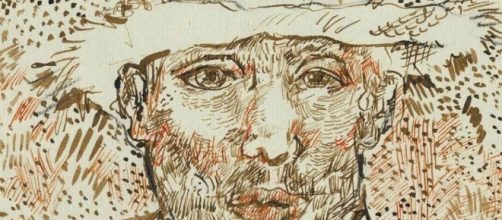A fight has erupted in the art world between the Van Gogh Museum in Amsterdam and a Toronto historian. Grounds for the battle are 65 found drawings that the scholar from Canada attributes to Van Gogh. The Dutch treasure house is not buying it. And because there’s no scientific way to authenticate the work, we’re left to wonder who to believe; unless you count the museum’s argument that the Artist sketched with black ink that turned to brown over time, and the drawings presumed to be his are made with brown ink. But as far as this column is concerned, there’s nothing to wonder about.
One look at the drawings in reproduction, which is all that the museum experts had to go on, and it’s plain who has the better argument. And as you will see, the vote of this column has nothing to do with the color ink used.
Is that you, Vincent?
Bogomila Welsh-Ovcharov, the scholar at the University of Toronto, a recognized authority on the artist who has studied his work for four decades, scoffs at the museum opinion, contending it isn’t the final arbiter of the artist’s work. She has an important ally, Ronald Pickvance, a Van Gogh expert from England, who deems the drawings “the most revolutionary discovery in the entire history of Van Gogh’s oeuvre.” It’s probably worth mentioning here that fake Van Gogh’s flood the marketplace.
And something else should be added: an ink drawing from the same time period of the drawings in contention (“Lawn with Weeping Tree),” sold at Sotheby’s in New York recently for $2,772,500. Of course, it’s necessary to point out that Sotheby’s sold a Frans Hals recently that turned out to be a forgery.
This is a no-brainer
Given the auction sale of a Van Gogh drawing, the supposed drawings are worth a fight. Multiply $2,772,500 by 65 and you get a princely sum, even despite the museum tagging the presumed drawings “monotonous, clumsy and spiritless imitations.” Siding with the museum, this writer sees a lack of heart in the drawings in question. They look like his style, but he’s not anywhere in these pictures.
You get the look of his work, but not the emotions that he poured into everything he did.
The artist leaves an important clue
A supposed sketch of himself dooms the argument for its legitimacy and lends great credence to the museum's argument. This Dutch painter executed some three dozen self-portraits and there’s zero resemblance of any of them to the apathetic and indifferent likeness he’s said to have drawn. And apart from all that, you have the artist's own words to tell you what he tried to do in his work. In letters to his brother Theo, he asked, “Is it not emotion, the sincerity of one’s feeling that draws us?” No doubt, Vincent. There’s nothing to draw us into these drawings.

